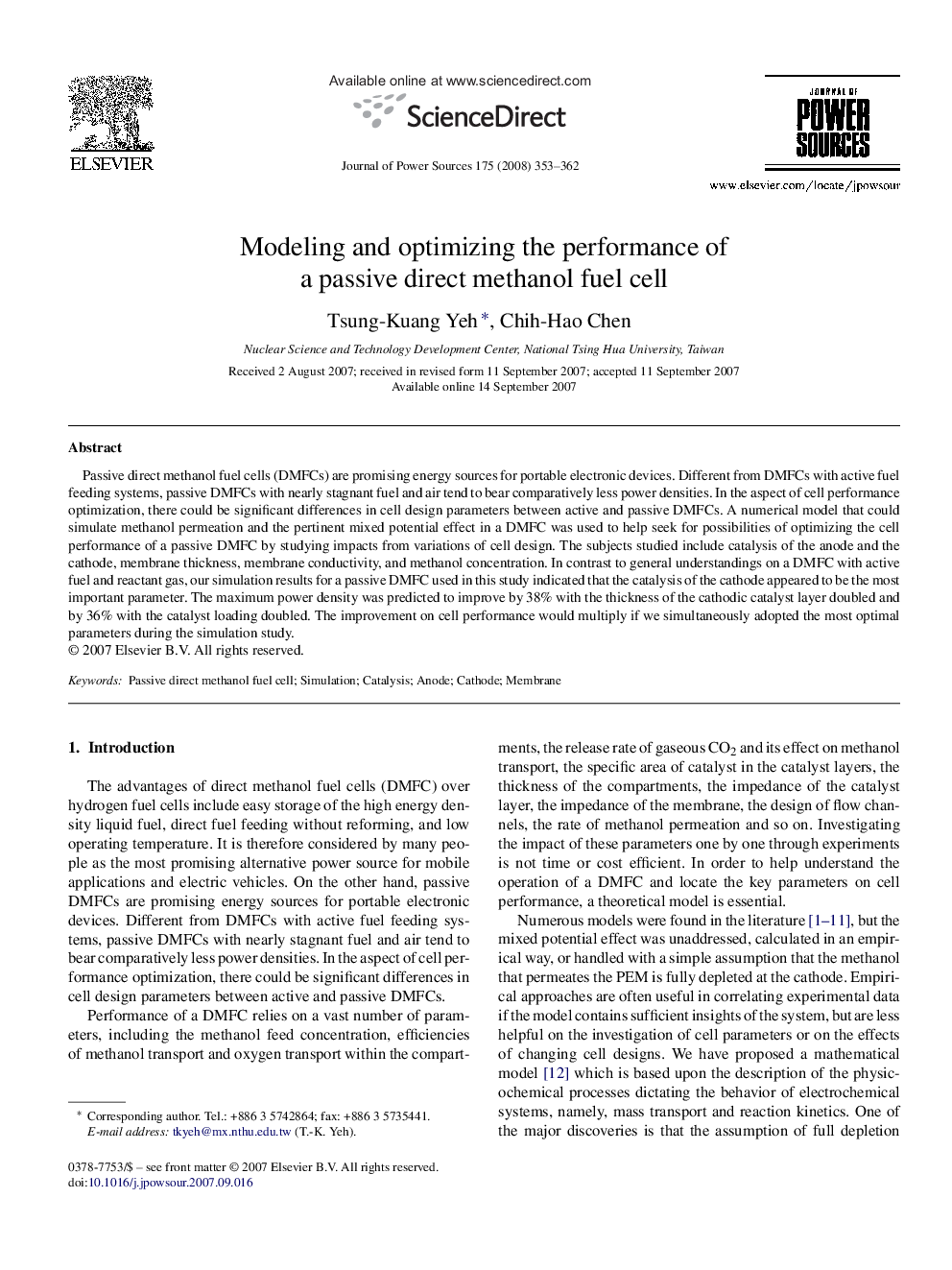| Article ID | Journal | Published Year | Pages | File Type |
|---|---|---|---|---|
| 1294790 | Journal of Power Sources | 2008 | 10 Pages |
Passive direct methanol fuel cells (DMFCs) are promising energy sources for portable electronic devices. Different from DMFCs with active fuel feeding systems, passive DMFCs with nearly stagnant fuel and air tend to bear comparatively less power densities. In the aspect of cell performance optimization, there could be significant differences in cell design parameters between active and passive DMFCs. A numerical model that could simulate methanol permeation and the pertinent mixed potential effect in a DMFC was used to help seek for possibilities of optimizing the cell performance of a passive DMFC by studying impacts from variations of cell design. The subjects studied include catalysis of the anode and the cathode, membrane thickness, membrane conductivity, and methanol concentration. In contrast to general understandings on a DMFC with active fuel and reactant gas, our simulation results for a passive DMFC used in this study indicated that the catalysis of the cathode appeared to be the most important parameter. The maximum power density was predicted to improve by 38% with the thickness of the cathodic catalyst layer doubled and by 36% with the catalyst loading doubled. The improvement on cell performance would multiply if we simultaneously adopted the most optimal parameters during the simulation study.
